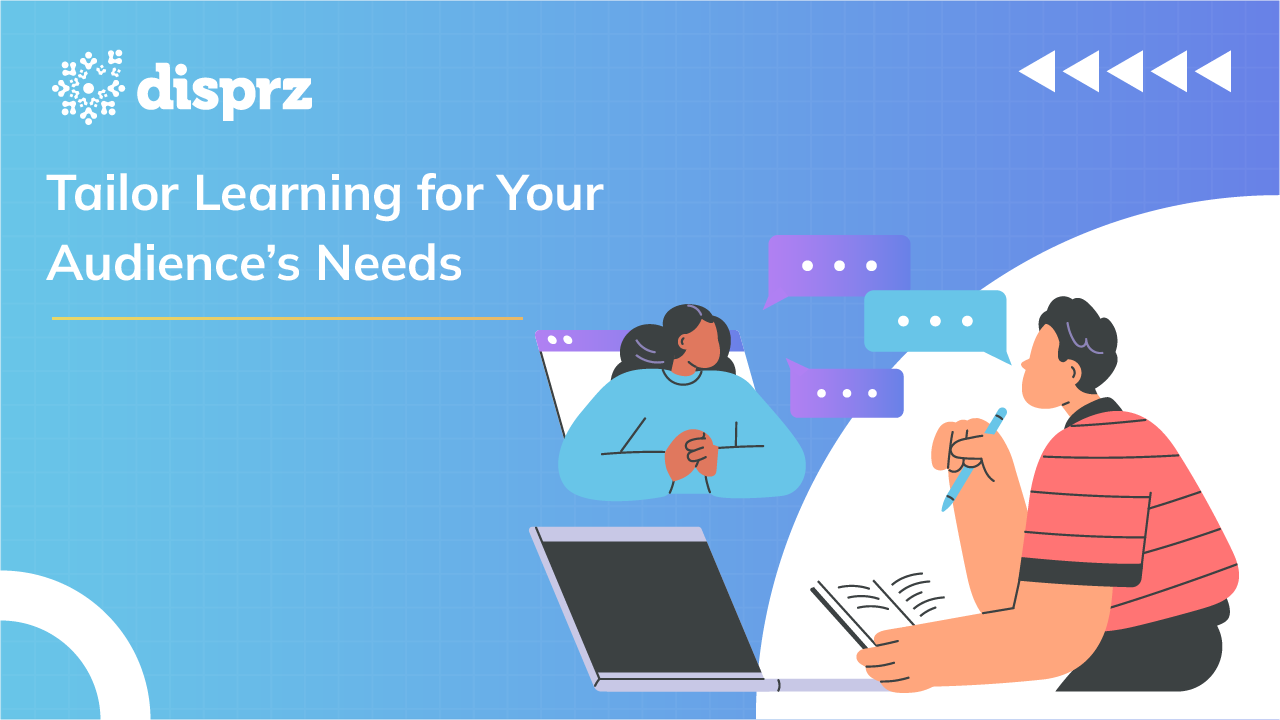Consider this - You’re on a phone call with Max, and he asks you to describe your office space. You’d likely detail the size of the room, the desk placement, and other items around you. But what if Max visited your office instead? You’d give him directions, starting from his location, using a map or a step-by-step guide to help him navigate to your space.
Now, imagine Max arriving at your office. You notice he’s wearing sunglasses, holding a walking cane, and carefully touching objects as he moves. You realize he’s blind. How would you now describe your room? Instead of saying, “There’s a desk in front of the window,” you’d say, “Take ten steps forward, and the desk is on your left.”
This shift in your approach reflects an important truth: the way we communicate depends entirely on our audience. The same principle applies to learning content. The reason many training programs fail to make an impact is that they’re designed without truly understanding the learners.
To deliver meaningful training, the first step is to understand your learners. Audience analysis goes beyond age or culture; it includes understanding their skills, motivations, and challenges. This ensures that your content resonates and achieves its intended purpose.
Identifying Your Learners - Who they are?
To create impactful learning experiences, you need to answer one critical question: Who are your learners? This understanding shapes how you approach your training content.
Where Are Your Learners From?
Start by conducting a demographic analysis. Understand the geographical, cultural, and educational backgrounds of your audience. Are you catering to a global workforce or a specific region? Is your content suitable for millennials, Gen Z, or older professionals? These insights determine the tone, language, and examples you use.
If the audience includes individuals from conservative societies, ensure your content aligns with cultural norms. For example, using images or scenarios involving mixed-gender interactions might not resonate in some regions. By visualizing your learners’ contexts, you can better design training that connects with them.
Understand Their Job Roles
A learner’s job role is a crucial factor in designing effective training. Consider a fruit seller: Is this person self-employed, working at a store, or selling at a market? By understanding their work environment, you can craft content that directly addresses their challenges.
Address Skill Gaps
Once you understand their job roles, conduct a skill gap analysis. Identify the difference between their current capabilities and the skills they need to excel. This gap analysis ensures your training content is both relevant and actionable.
Empathizing with Your Learners in 2025
Creating impactful training requires empathy. Put yourself in your learners’ shoes to understand their needs and challenges. Imagine you’re designing a course for Max, the blind individual from earlier. How would you structure it to ensure he gains value? Empathy helps you design training that is meaningful and inclusive.
Ask yourself:
-
What challenges do your learners face today?
-
How will your content help them overcome these challenges?
-
Are there potential obstacles in how the content is delivered?
For instance, if you’re designing gamified training, consider whether it would appeal to an older audience. Tailor your content to suit their preferences and comfort levels.
Is Training the Right Solution?
Before jumping to create training, evaluate whether it’s the right solution for your learners’ challenges. Sometimes, the issue isn’t a lack of skills but organizational inefficiencies or unclear strategies. Training might not always be the answer.
Ask yourself:
-
Does the problem lie with the learners or their environment?
-
Could a one-time coaching session or process change resolve the issue?
Delivering Experiential Learning in 2025
Effective training isn’t just about providing information. It’s about creating experiences. Let your learners make decisions, see the outcomes, and learn from them. For example, instead of telling employees not to touch a hot object, allow them to reflect on a simulated scenario where a wrong choice leads to consequences.
Focus on creating content that learners remember, not because they’re told to, but because they’ve experienced its value. Every training session should be an opportunity for learners to engage in experiential learning, building skills they can apply in real-life situations.
A Final Word on Learning Content in 2025
Training isn’t just about transferring knowledge; it’s about influencing lives. When designing learning content, remember that it impacts not only the immediate learners but also their interactions with others. A well-designed program has a ripple effect, fostering shared experiences and building a culture of continuous learning.
By understanding your audience, tailoring your content, and prioritizing experiences over instructions, you can create impactful training programs that resonate with learners and achieve meaningful results.
To discover how Disprz can help you craft audience-focused learning experiences, schedule a demo today and explore how our learning platform transforms training into impactful journeys.








